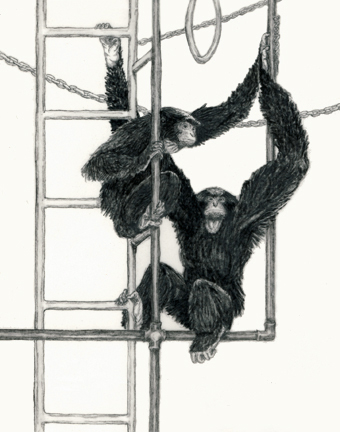A calm and uneventful year passed for the siamangs at the Milwaukee Zoo. Both animals seemed happy and healthy. They got along perfectly with one another. Suzy continued to be friendly and gentle with humans, although now that she had a gibbon mate, she was somewhat less affectionate with people. Having a mate apparently agreed with Unk. His relationship with the zookeepers improved enormously. While it was still a good idea to be careful around the strong, unpredictable ape, the keepers often noticed that Unk wore his play face far more often than his aggressive face.

The available information on siamang pregnancies was births was minimal. No one knew how long the normal gestation period was for siamangs, so no one could predict with certainty just when Suzy’s baby would be born. Knowing that the normal gestation period of larger apes was around eight months or a little more, and the gestation period of smaller gibbons around seven months, Mr. Speidel reasoned that a siamang’s pregnancy might last around seven-and-a-half months. Suzy’s baby would most likely be born in early summer.
Meanwhile, there was nothing to do but wait and read as much information aas possible about the care of newborn apes. Mr. Speidel realized that there was some chance Suzy would reject her baby. Nearly all the gorillas and many of the chimpanzees born in captivity up to that time had been raised by humans. The little apes’ mothers had grown up in zoos, isolated from the social groups in which normal ape behavior is learned. They simply had never learned how to care for their young.

